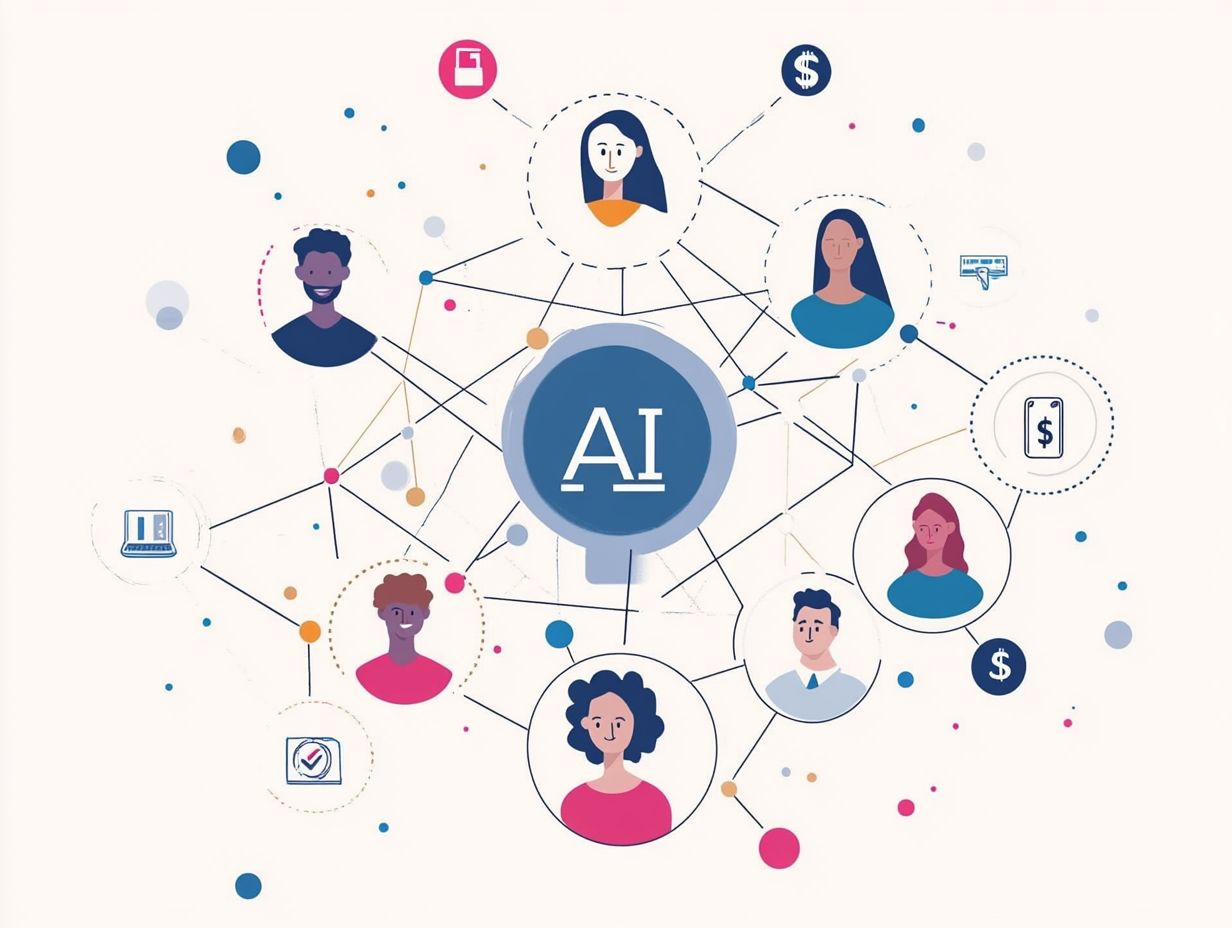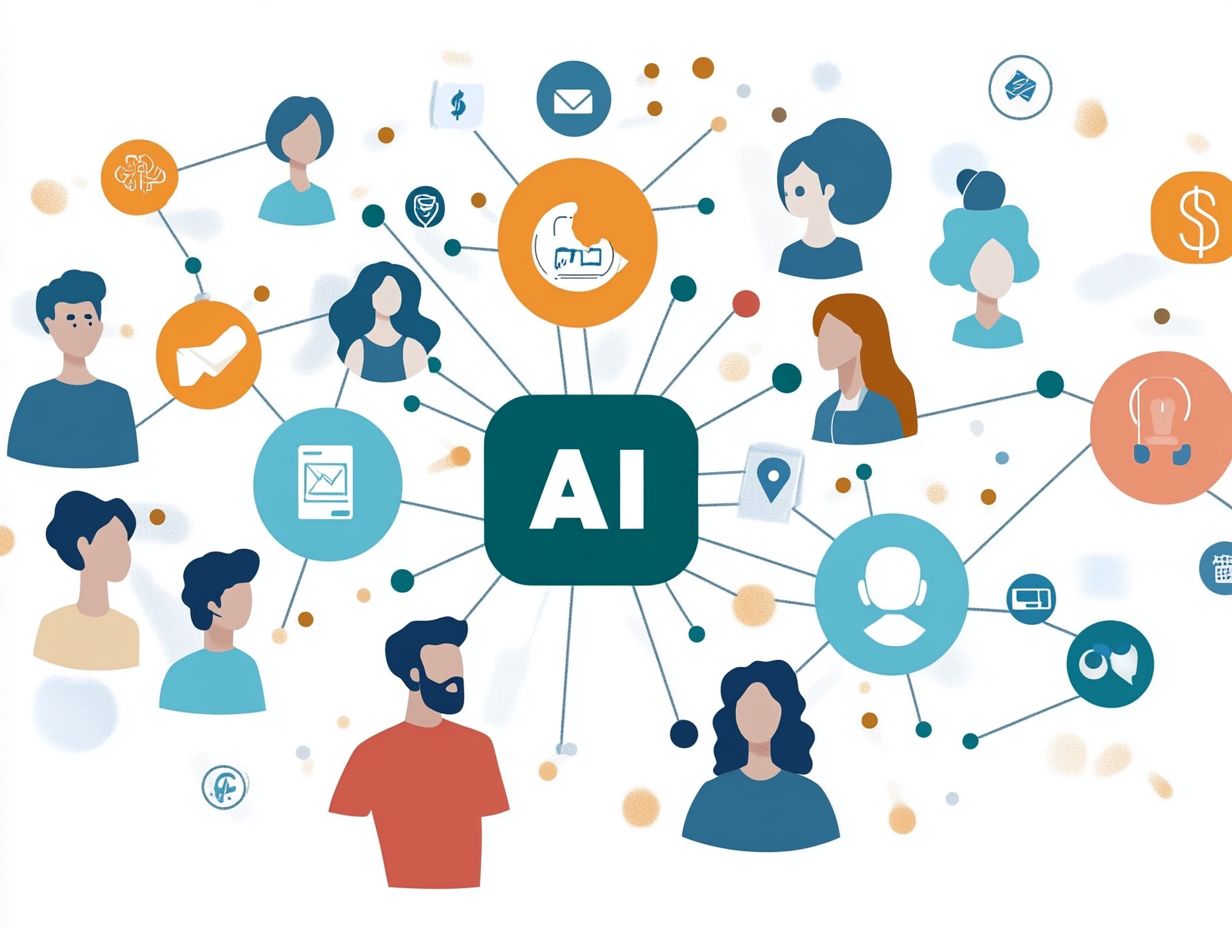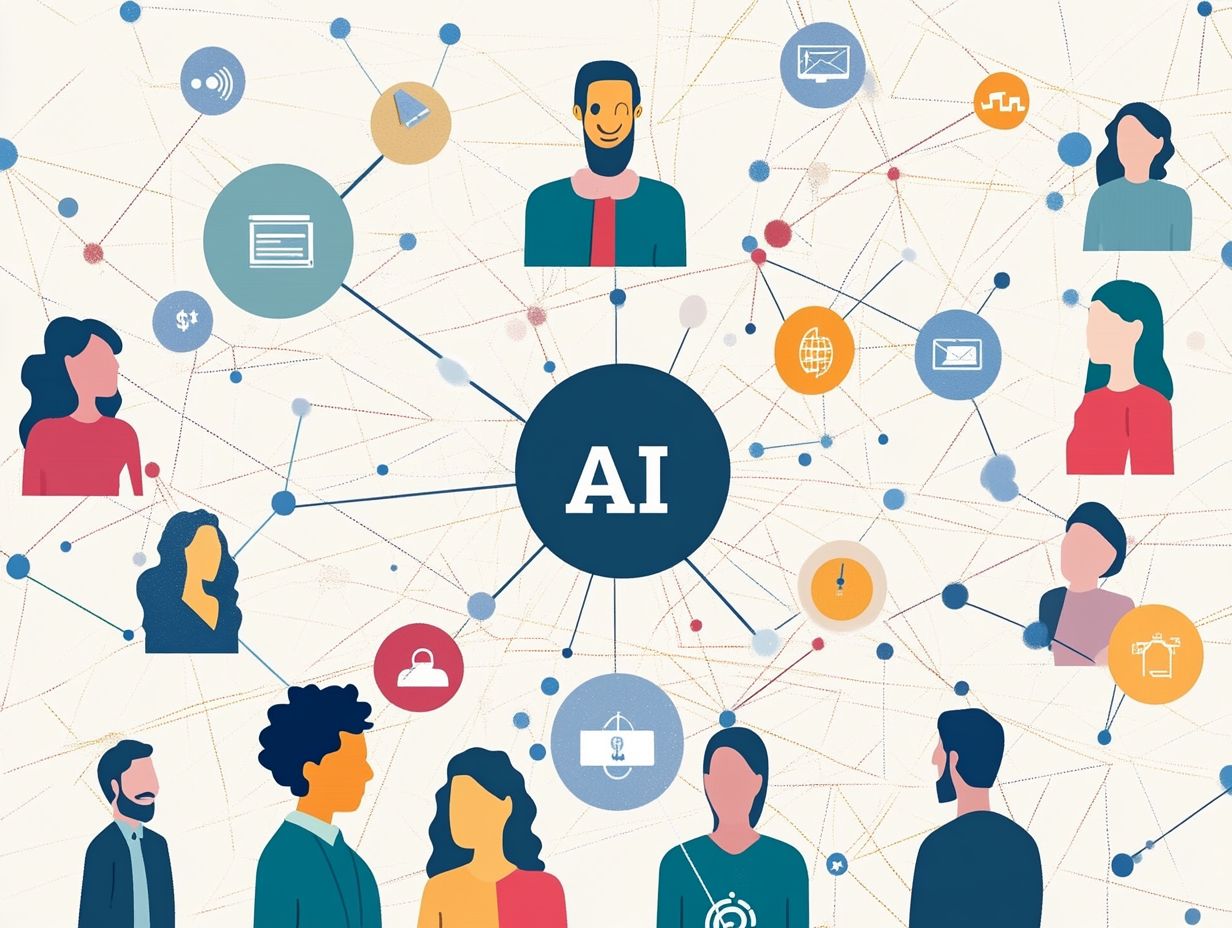The Role of AI in Peer-to-Peer Lending Platforms
The rise of artificial intelligence is reshaping various industries, including peer-to-peer (P2P) lending.
This exploration looks at how technology boosts efficiency, risk management, and customer experience on P2P lending platforms.
As advancements happen, you ll face challenges, especially around data privacy, security, and regulatory compliance.
You will discover applications of AI like automated credit scoring and loan approval processes.
Contents
- Key Takeaways:
- The Benefits of AI in Peer-to-Peer Lending
- Challenges and Concerns with AI in Peer-to-Peer Lending
- Current and Future Applications of AI in Peer-to-Peer Lending
- Preguntas Frecuentes
- El Papel de la IA en las Plataformas de Pr stamos entre Personas
- 2. Puede la IA reemplazar completamente la participaci n humana en las plataformas de pr stamos entre personas?
- 3. C mo ayuda la IA a mitigar riesgos en los pr stamos entre personas?
- 4. Se utiliza la IA para el servicio al cliente en las plataformas de pr stamos entre personas?
- 5. Qu impacto tiene la IA en las tasas de inter s en los pr stamos entre personas?
- 6. Hay desventajas potenciales al depender de la IA en los pr stamos entre personas?
Key Takeaways:

AI is changing peer-to-peer lending by driving efficiency and improving risk management through automation and data analysis.
Personalization and better customer experience are key benefits, allowing for tailored loan offers and superior service.
However, data privacy and regulatory compliance are crucial concerns, highlighting the need for responsible AI use.
Definition and Evolution of the Industry
The lending industry has seen remarkable transformations over the past few decades. It has moved from traditional banking methods to embracing new technologies like artificial intelligence and machine learning.
This shift has reshaped the financial landscape, enhancing customer experiences, streamlining loan processing, and enabling real-time decisions based on borrower profiles and creditworthiness.
This shift leads to better compliance adherence and refined risk management strategies.
Previously, lending practices relied heavily on manual processes and limited borrower information, which posed considerable risks for lenders.
The introduction of credit scoring models in the late 20th century was a game changer, offering banks a more accurate means of assessing creditworthiness.
Now, with the rise of AI technologies, lenders can swiftly analyze vast data sets, paving the way for personalized loan offerings and dynamic interest rates.
Digital platforms are changing the game by giving more people access to credit, while advanced analytics sharpen fraud detection efforts.
These innovations not only boost market growth but also create new investment opportunities, propelling the lending sector into an era defined by agility and inclusivity.
The Benefits of AI in Peer-to-Peer Lending
The advantages of integrating artificial intelligence into peer-to-peer lending are truly transformative.
These technologies reshape how financial institutions evaluate creditworthiness and expedite loan approvals, resulting in an elevated customer experience and heightened satisfaction.
By leveraging AI-powered algorithms, lenders can assess borrower profiles in real time and use predictive analytics for more precise performance forecasting.
This not only enhances efficiency but also fosters trust and confidence among borrowers.
Efficiency and Risk Management
Efficiency in peer-to-peer lending can be significantly enhanced with the integration of machine learning and automated loan approval processes.
These innovations optimize risk management strategies and help minimize operational costs for financial institutions.
By embracing AI-driven lending solutions, you can swiftly evaluate borrower profiles, making informed decisions that notably reduce default risk.
These advancements don t just speed up the loan approval process; they also improve the accuracy of credit scoring.
Utilizing algorithms that analyze a multitude of data points such as transaction history and social media behavior in real time gives you a comprehensive understanding of an applicant’s creditworthiness.
This insight allows you to tailor your offerings to better align with borrower needs while reducing the overall expenses linked to risk assessments.
As predictive analytics continue to evolve, you can ensure that your financial institution remains resilient, fostering sustainable lending practices that enhance your competitive edge and build greater trust among consumers.
Personalization and Customer Experience

The combination of artificial intelligence (AI) algorithms into peer-to-peer lending platforms enhances your experience by offering personalized financial products and services that cater specifically to your needs and preferences. This shift improves how lenders connect with you and enables them to analyze your payment behavior and credit scores in peer-to-peer lending more effectively.
By leveraging detailed borrower data, these platforms can create predictive models tools that forecast what borrowers might want based on their past behavior that anticipate your needs, ensuring you receive the right financial products at just the right moments. If you have a strong record of on-time payments, the algorithm might suggest larger loan amounts or better interest rates, ultimately fostering your loyalty and satisfaction.
Picture this: real-time feedback tools that allow you to voice your needs, helping lenders continuously adapt their offerings. This proactive approach strengthens long-term relationships, as satisfied borrowers like you are more likely to return for future loans and recommend the service to others.
Challenges and Concerns with AI in Peer-to-Peer Lending
While the advantages of AI in peer-to-peer lending are substantial, it’s essential to recognize the significant challenges and concerns that accompany this integration, particularly regarding data privacy and security.
The use of AI technologies prompts careful consideration of how borrower information is collected, processed, and safeguarded. This requires rigorous commitment to regulatory compliance standards to protect against potential fraud and cybersecurity threats.
Your vigilance in these areas is crucial for ensuring a secure lending environment.
Data Privacy and Security
In today s landscape of digital lending, data privacy and security are not just buzzwords; they are essential pillars that financial institutions must uphold to maintain customer trust and meet regulatory demands.
The integration of AI technologies for fraud detection illustrates the intricate balance between harnessing data for operational benefits and protecting sensitive borrower information. Financial institutions face mounting pressure to comply with ever-evolving regulations designed to safeguard consumer data from unauthorized access and misuse.
Neglecting these responsibilities can lead to hefty financial penalties and, more critically, a loss of confidence from clients. As AI systems sift through vast amounts of personal data, the risk of data breaches increases, which can have catastrophic repercussions for both lenders and borrowers.
Your organization must urgently adopt robust cybersecurity measures and conduct regular audits to ensure adherence to data privacy laws. By transparently sharing data protection strategies, you can bolster customer loyalty, reassuring clients that their sensitive information is handled with the utmost care and diligence.
Regulatory Compliance
Regulatory compliance is essential in the lending industry, especially as financial institutions increasingly combine AI technologies into their operations. By adhering to local and international regulations, you ensure that your lending solutions are effective, ethical, and secure, building trust between you and your borrowers.
The rise of artificial intelligence in today s fast-paced financial landscape brings exciting opportunities and complex challenges. As you strive to innovate and improve customer experiences with AI tools, you also need to navigate a maze of regulatory requirements.
This delicate balancing act can lead to significant hurdles, such as keeping up with legislative changes, ensuring data protection, and managing risks tied to algorithmic decision-making. A solid legal framework not only facilitates smoother adoption of these technologies but also serves as a protective barrier, helping you avoid compliance breaches that could shake consumer confidence and disrupt the lending ecosystem.
Act now to enhance customer experience and security by adopting these recommendations. Your proactive steps will ensure a trustworthy lending environment for all.
Current and Future Applications of AI in Peer-to-Peer Lending

Current applications of AI in peer-to-peer lending are reshaping the operations of financial institutions, particularly through automated credit scoring and streamlined loan underwriting. For a deeper insight into this topic, consider exploring understanding credit risks in peer-to-peer lending. These innovations lead to more efficient decision-making processes that you can rely on.
As you look to the future, predictive analytics and AI-driven insights hold the potential to revolutionize the lending landscape even further, allowing precise risk assessment and enhanced borrower profiling.
Automated Credit Scoring
Automated credit scoring leverages sophisticated AI algorithms to analyze your profile and assess your creditworthiness far more efficiently than traditional methods. This gives financial institutions the power to make quicker, data-driven decisions.
By utilizing in-depth data analysis, the accuracy of credit scoring models is significantly enhanced, ultimately minimizing the risk of default. These algorithms tap into vast amounts of data from your transaction histories to your social media activity to identify patterns that human analysts might overlook.
For instance, if you consistently make timely payments across various utility accounts, that positive behavior may not be fully reflected in traditional credit reports. AI tools are transforming operations right now! By automating the evaluation process, lenders can swiftly adapt to the ever-changing market landscape and your behaviors as a borrower.
Lenders alleviate operational burdens and cultivate a fairer lending environment, granting more individuals access to credit based on a complete assessment of their financial habits.
Loan Underwriting and Decision Making
AI technologies are fundamentally reshaping your loan underwriting and decision-making processes by introducing advanced risk assessment techniques that leverage comprehensive borrower data for informed evaluations. This transformation allows financial institutions to streamline operations and elevate lending solutions.
By employing machine learning algorithms, these institutions can analyze vast amounts of information that go beyond traditional credit scores, including transaction histories and even social media behavior. Take, for example, companies like Upstart, which have successfully integrated AI into their underwriting processes, resulting in quicker approvals and reduced defaults leading to greater customer satisfaction.
This innovative approach not only accelerates the lending timeline but also offers a more personalized experience for borrowers like you, ensuring that you feel valued and understood. Many lenders are seeing a boost in client loyalty and trust, further solidifying their position in the market.
Preguntas Frecuentes
El Papel de la IA en las Plataformas de Pr stamos entre Personas

La IA juega un papel crucial en las plataformas de pr stamos entre personas al automatizar procesos clave, mejorar la evaluaci n de riesgos y mejorar la experiencia del usuario. Ayuda a emparejar a los prestatarios con prestamistas adecuados, detectar actividades fraudulentas y proporcionar ofertas de pr stamos personalizadas.
2. Puede la IA reemplazar completamente la participaci n humana en las plataformas de pr stamos entre personas?
No, la IA no puede reemplazar completamente la participaci n humana en las plataformas de pr stamos entre personas. Aunque puede automatizar muchos procesos, la supervisi n y la toma de decisiones humanas siguen siendo necesarias para tareas complejas como la evaluaci n de cr dito y la resoluci n de disputas.
3. C mo ayuda la IA a mitigar riesgos en los pr stamos entre personas?
La IA analiza grandes cantidades de datos para identificar riesgos potenciales y predecir la probabilidad de incumplimientos de pr stamos. Tambi n ayuda a monitorear el rendimiento de los pr stamos y detectar se ales de advertencia tempranas de incumplimiento, lo que permite a los operadores de la plataforma tomar las acciones necesarias para mitigar los riesgos.
4. Se utiliza la IA para el servicio al cliente en las plataformas de pr stamos entre personas?
S , la IA se est utilizando m s para el servicio al cliente en las plataformas de pr stamos entre personas. Los chatbots de IA manejan eficazmente las consultas de los clientes y brindan apoyo en tiempo real.
Adem s, ayudan en el proceso de solicitud de pr stamos. Esto mejora la experiencia general del cliente.
5. Qu impacto tiene la IA en las tasas de inter s en los pr stamos entre personas?
La IA puede reducir las tasas de inter s en los pr stamos entre personas. Al agilizar procesos y reducir costos, mejora la evaluaci n de riesgos.
Esto beneficia tanto a prestatarios como a prestamistas, haciendo que los pr stamos sean m s atractivos y competitivos.
6. Hay desventajas potenciales al depender de la IA en los pr stamos entre personas?
La IA trae muchos beneficios, pero tambi n tiene desventajas. Puede no considerar el factor humano en pr stamos y financiaci n.
Sus algoritmos, que son reglas que siguen las computadoras, pueden estar sesgados si los datos no son diversos. Monitorear y evaluar continuamente la IA es esencial para garantizar pr cticas ticas y justas.





